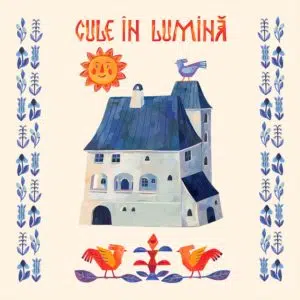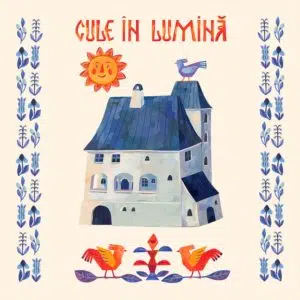Background: what are Romanian culas?
Cula (tr. kule= tower) is a fortified tower dwelling, part of an architectural defense program that spread throughout southeastern Europe, in the Balkans, between the 17th and 19th centuries. Culas are still found in Bulgaria, Albania, Greece, Serbia, Bosnia and Herzegovina, North Macedonia, Montenegro, the Kosovo region and, north of the Danube, in southern Romania, mainly in Oltenia.
The Romanian culas (from Turkish “kula” — “tower”) were built by the boyars to defend their families from Turkish incursions. Today, they are often called “the long-lost architectural treasures of Oltenia”.
Idea: a CSR campaign that generates awareness for Romanian culas
Together with CEZ Group, which in 2024 became Evryo Group, one of the leading energy and gas suppliers in Romania, we launched a program to bring them back to the public's attention.
Another objective was raising awareness on the historical role that culas have in the cultural and social development of communities and creating solutions for possible restorations. How? Through PR activities that brought culas back into the light.
Main PR activities
The project presentedall available information on the last culas in Romania on an interactivewebsite. The culas were rated in a competition where experts and historiansselected 10 of them that had great architectural and historical value and alsothe biggest tourist potential.
For them, architectural students from the “Ion Mincu” University of Architecture and Urbanism in Bucharest made creative proposals to highlight the architectural value.
The public had the possibility to enrich the information on the culas and also vote the ones that in their view should have been included in the proposals for conservation projects.
In addition, guided tours have been organized to present them to those interested, with the aim of increasing the tourist potential of the entire area and even including them in a regional tourist circuit.
In the summer of 2021, we launched #CulasRoad, the first tourist circuit dedicated to the culas from Oltenia, in partnership with local authorities. 19 directional and informative tourist signs were mounted on two of the most voted poles.
PR Tactics
The project went on for two years, during which:
- we have involved the CEZ internal community
- we have communicated with 35 local authorities in Oltenia
- we've partnered with renowned influencers to get our message across
- we organized exhibitions
- we challenged architecture students to make 3D mock-ups of some of the culas' restoration projects, which we later donated to a museum
- We have put together all the information gathered in an E-book dedicated to the project.
Prizes won
The campaign was awarded Gold at the Sabre Awards, in the Institutional Image category, and took third place at Webstock in the Best Experiential Campaigns category.
Frequently Asked Questions
1/ What are Romanian culas and where are they found?
The Romanian culas are fortified tower dwellings, built especially in the 18th-19th centuries, for defense against Ottoman incursions. They are found in southern Romania, especially in Oltenia, but also in other countries in southeastern Europe, such as Bulgaria, Albania, Greece or Serbia. In Romania, the culas are considered “long-lost architectural treasures” of Oltenia.
2/ What was the aim of the “Culas in the Light” campaign?
Aim of the campaign was to bring the culas of Oltenia back to the public's attention, raise awareness of their historical and cultural value, and generate solutions for their preservation and restoration. The campaign was carried out in partnership with CEZ Group (now Evryo Group) and the local authorities of Oltenia.
3/ What is the #CulasRoad tourist circuit?
#CulasRoad is the first tourist circuit dedicated to Oltenia’s culas, launched in the summer of 2021. It was created in partnership with the local authorities and includes the installation of 19 tourist and informational signs to the towers selected for their architectural and historical value. The project promotes cultural tourism in the Oltenia region.







Happy%2520Chicken.webp)